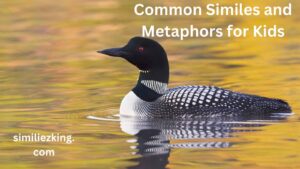When it comes to describing dryness in the English language, similes are a powerful tool. They allow us to express ideas more vividly and creatively, helping our messages stand out in both formal and informal contexts. Whether you’re writing creatively, describing a situation, or crafting a casual text message, knowing how to use the right simile can make all the difference.
In this article, we will explore over 10 similes for “dry,” providing you with polite, professional, and casual alternatives. Each simile will come with examples and tips for choosing the right one depending on your communication style and tone. Let’s dive into some of the most evocative ways to express dryness!
1. Dry as a Bone
One of the most common and widely recognized similes, “dry as a bone” vividly conveys extreme dryness. It’s often used to describe something or someone that is parched, with no moisture in sight.
Example:
After the long hike in the desert, my throat was dry as a bone.
Tone Nuance: This simile is informal and works well in everyday conversation or descriptive writing. It’s not ideal for formal contexts but is perfect for storytelling or casual discussions.
2. Dry as Dust
“Dry as dust” is another popular simile used to describe something extremely dry. It conjures the image of dust particles, which are often dry and powdery, lacking any moisture.
Example:
The old book sat on the shelf, dry as dust, covered in years of neglect.
Tone Nuance: This simile has a more poetic feel, making it suitable for both literary works and informal speech. It’s often used when describing something neglected or forgotten.
3. Dry as a Desert
Deserts are iconic symbols of extreme dryness, and this simile is often used to describe arid conditions or a complete lack of moisture.
Example:
The ground in the backyard is dry as a desert after weeks without rain.
Tone Nuance: This is a versatile simile, suitable for both casual and professional contexts, especially when you need to emphasize extreme dryness.
4. Dry as a Cactus
Much like deserts, cacti are known for thriving in dry conditions. This simile is effective when you want to describe something or someone that is extremely dry.
Example:
The wind whipped through the cactus, dry as a cactus under the harsh sun.
Tone Nuance: This simile is informal and could be used creatively in literature, or as a fun and descriptive way of speaking about arid places or situations.
5. Dry as a Parched Throat
This simile is particularly effective when describing personal dryness, especially in relation to thirst. It paints a vivid picture of discomfort and the need for hydration.
Example:
After speaking for hours, her throat was dry as a parched throat.
Tone Nuance: It’s an informal yet descriptive simile, ideal for conversations about thirst, fatigue, or dryness in personal contexts.
6. Dry as Paper
Describing something as “dry as paper” highlights a lack of moisture or fluidity. Paper tends to lose its smoothness and softness when dry, making this simile suitable for a wide range of scenarios.
Example:
The towel was dry as paper after hanging in the sun for hours.
Tone Nuance: This is a neutral simile that can be used in both casual and formal contexts without sounding out of place.
7. Dry as a Cracker
A cracker, known for being crisp and dry, is an ideal metaphor when describing something that is notably dry. This simile can work for both physical and metaphorical dryness.
Example:
The bread was dry as a cracker, leaving a gritty feeling in my mouth.
Tone Nuance: Informal and slightly playful, this simile works well for casual conversations or when adding humor to a descriptive sentence.
8. Dry as a Bone in the Sun
This variation of “dry as a bone” intensifies the dryness by invoking the idea of exposure to the sun, which accelerates the drying process. It’s perfect for emphasizing extreme conditions.
Example:
The clothes hung out to dry were as dry as a bone in the sun.
Tone Nuance: This is a more vivid version of the original simile, suitable for descriptive writing or casual storytelling.
9. Dry as Sand
Sand, especially in hot climates, is notoriously dry. This simile can describe anything from weathered soil to a lack of enthusiasm or emotion.
Example:
Her words felt dry as sand, devoid of any warmth or passion.
Tone Nuance: This is an informal simile, but it’s flexible enough to be used in more formal contexts when you need to emphasize emotional or physical dryness.
10. Dry as a Bone in the Wind
This simile evokes the idea of an object or situation left exposed to the elements for so long that it becomes uncomfortably dry. It’s a good metaphor for weathering hardship or neglect.
Example:
After the storm passed, the grass was dry as a bone in the wind.
Tone Nuance: It works in both casual and literary settings, evoking a sense of prolonged exposure to harsh conditions.
11. Dry as a Desert Floor
Drawing a parallel between dryness and the cracked, barren surface of a desert floor, this simile is perfect for describing extreme aridity or desolation.
Example:
The old riverbed lay dry as a desert floor, devoid of any water.
Tone Nuance: This simile carries a more serious, poetic tone and is most fitting for formal or descriptive writing where you want to evoke a sense of emptiness or drought.
Texting Examples
- “The weather today is dry as a desert. My skin is starting to feel it!”
- “My throat is dry as dust after that long meeting. I need a drink!”
- “This bread tastes dry as a cracker. I’m going to grab some butter.”
- “The wind outside is dry as a cactus, and I can feel it on my skin.”
- “I just cleaned the house, and now the floors are dry as paper. It feels so clean.”
- “The old wooden chair was dry as a bone in the sun. It probably hasn’t been sat on for years.”
- “After that long walk, my throat is dry as a parched throat. I can’t wait for water.”
- “The leaves outside are dry as sand. We definitely need some rain soon!”
- “That conversation was dry as a desert. I was struggling to keep up.”
- “My lips are dry as the desert floor. I need some chapstick!”
- “The sun has been so strong lately; everything is dry as a bone in the wind.”
Conclusion
Similes offer a fun and effective way to communicate dryness in various contexts. Whether you are describing the weather, a feeling of thirst, or even a dry conversation, using similes can make your language more vivid and engaging. The alternatives we’ve explored provide a wide range of options for both casual and professional communication. By choosing the right simile, you can tailor your expression to suit any tone or situation.



